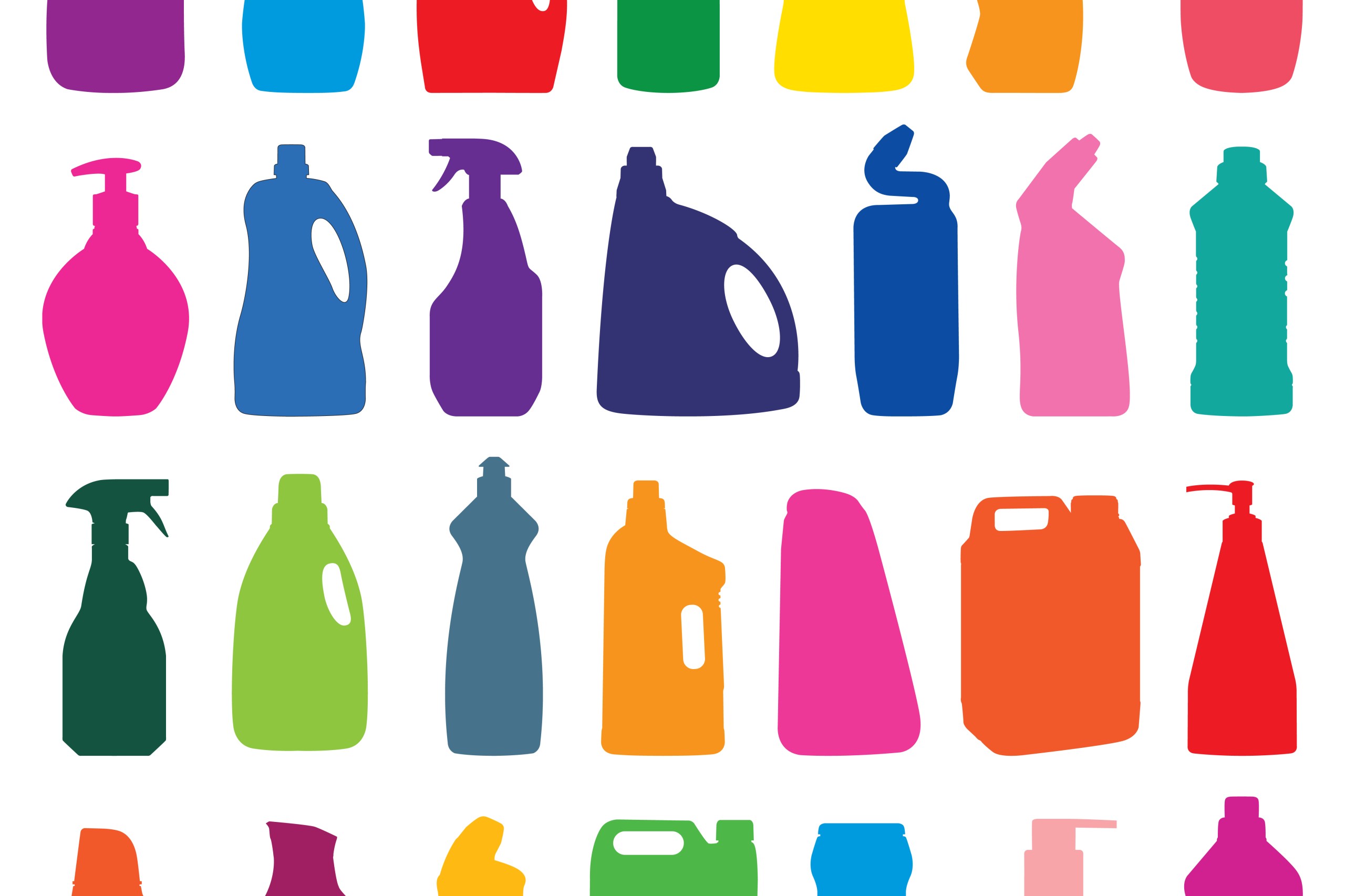A bleach solution or rubbing alcohol is your best bet for keeping your home sanitized.

There’s everyday clean, guest clean, and then there’s COVID-19 clean.
Let’s get down to the nitty gritty, literally, and focus on how to disinfect your home. To combat this virus, you’ll want your big guns: bleach, rubbing alcohol, and hot water.
The Best Disinfectants
For your high-touch surfaces, the Centers for Disease Control recommends a bleach solution diluted with water, or a 70% alcohol solution.
Follow this bleach recipe: 5 tablespoons (1/3 cup) bleach per gallon of water, or 4 teaspoons of bleach per quart of water.
Make sure to properly ventilate when disinfecting with bleach.
And check to see if your bleach has expired. Who knew it could? After about 9 months to a year, and if it smells less bleachy, it’s lost its disinfecting power. Time for a new jug.
Tip: Don’t mix bleach with anything other than water; otherwise, it could set off a dangerous chemical reaction. For instance, bleach + alcohol is a deadly combo.
How to disinfect your home if you don’t have bleach? Regular old rubbing alcohol (isopropyl alcohol or ethyl alcohol) works, so long as it’s at least 70% alcohol, according to the CDC. The alcohol concentration will be listed on the bottle. Rubbing alcohol you buy should already be diluted, unlike bleach.
Is There a Such a Thing as Too Much Disinfectant?
According to an EPA fact sheet, studies have found that using some disinfectant products can cause germs to become resistant.
The EPA has issued a list of disinfectants on the market that it believes are effective in killing COVID-19. Look for the EPA registration number on the product and check it against this list to ensure you have a match.
Erica Marie Hartman, an environmental microbiologist at Northwestern University in Evanston, Ill., whose research focuses on resistance, confirms soap, bleach, and alcohol are your best bets.
What about the various disinfecting wipes on the market (at least if you can find them)? Hartman says the active ingredient in many of those is an ammonium compound, which could become resistant to viruses over time.
Surfaces That Need Your Attention
With your preferred disinfectant, wipe down high-touch surfaces like doorknobs, light switches, tables, remotes, banisters, toilets, sinks, and faucets daily or more often, if someone in your home is sick.
Contact time is another key aspect of surface sanitizing. “Disinfection isn’t instantaneous,” says Hartman. [For a bleach solution], you want to leave it on the surface for 10 minutes before wiping it off. ”
By the way, new research from scientists at the National Institutes of Health, among other agencies, shows that at least some coronavirus can live for up to 24 hours on cardboard and up to three days on plastic and stainless steel.
But a report in “The Washington Post” notes that the most likely period for infection from the virus on surfaces is in the first 10 minutes to one or two hours.
Not All Floors Can Handle Bleach
For your nonporous floors, like those in the bathroom, the CDC recommends mopping with the bleach solution.
Avoid bleach on hardwood and other porous floors because of staining. Instead, use a disinfecting wet mop cloth without bleach.
Cleaning Isn’t Disinfecting
From the you-might-be-surprised files: Disinfecting with bleach isn’t actually cleaning. If you also need to clean your countertops of dirt and grime, do that first with soap and water. Then use the bleach solution or rubbing alcohol to combat the virus.
Killing Microbes on Clothes
Most washing machines today do a bang-up job on dirty clothes with cold water, which is best for energy savings. But, and especially if you have a sick person in your house, the hot-water setting followed by a high-heat dry for about a ½ hour to 45 minutes is best for virus eradication. thoroughly dry.
Don’t forget about your laundry hamper. Wipe it down like you would other surfaces. You can also use a reusable liner bag, which you can launder with the clothes.
What If I’m Selling My House, and Inviting More Germs In?
How to disinfect your home when it’s for sale? Talk to your agent who will work with you to establish a hygienic showing protocol, including requiring visitors to wash hands with soap and water or use hand sanitizer when they arrive, and to remove shoes or wear booties before entering. Removing shoes not only reduces dirt coming in, but potentially germs.
In addition, some agents are reporting that they’ve eliminated open houses to avoid group situations.
After showings, practice your surface wipe-down routine.
Finally, when you work with disinfectants, practice some self care. “Alcohol and bleach can be very aggressive on your skin, so wearing rubber gloves can help protect your hands,” Hartman says.
CHRISTINA HOFFMANN
Christina Hoffmann has been a strategist and editor in the shelter and real estate fields for 12+ years — most recently as content manager for HouseLogic. Her 100-year-old four-square home is always teaching her new things.
